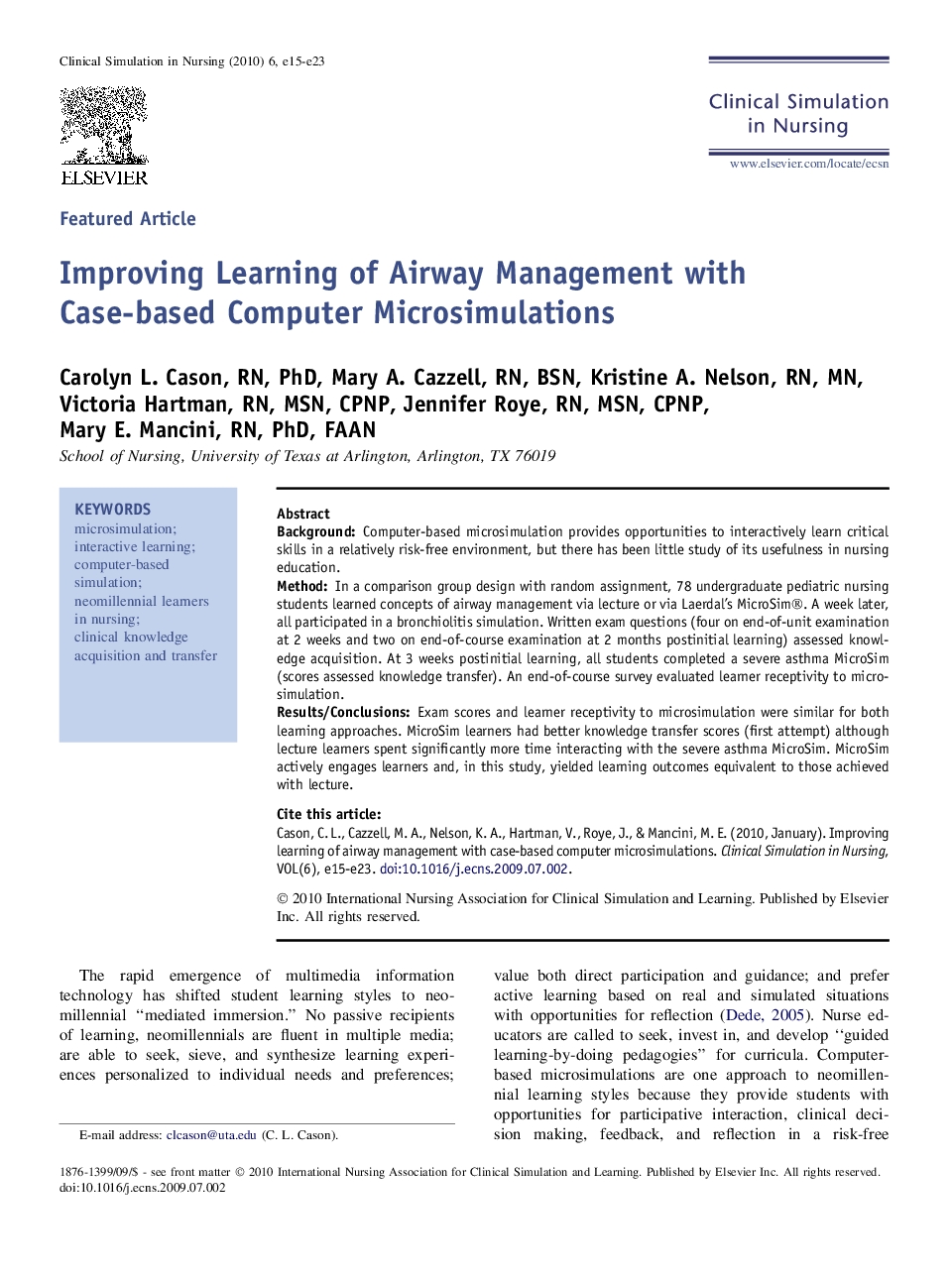| کد مقاله | کد نشریه | سال انتشار | مقاله انگلیسی | نسخه تمام متن |
|---|---|---|---|---|
| 2646419 | 1138860 | 2010 | 9 صفحه PDF | دانلود رایگان |

BackgroundComputer-based microsimulation provides opportunities to interactively learn critical skills in a relatively risk-free environment, but there has been little study of its usefulness in nursing education.MethodIn a comparison group design with random assignment, 78 undergraduate pediatric nursing students learned concepts of airway management via lecture or via Laerdal's MicroSim®. A week later, all participated in a bronchiolitis simulation. Written exam questions (four on end-of-unit examination at 2 weeks and two on end-of-course examination at 2 months postinitial learning) assessed knowledge acquisition. At 3 weeks postinitial learning, all students completed a severe asthma MicroSim (scores assessed knowledge transfer). An end-of-course survey evaluated learner receptivity to microsimulation.Results/ConclusionsExam scores and learner receptivity to microsimulation were similar for both learning approaches. MicroSim learners had better knowledge transfer scores (first attempt) although lecture learners spent significantly more time interacting with the severe asthma MicroSim. MicroSim actively engages learners and, in this study, yielded learning outcomes equivalent to those achieved with lecture.
Journal: Clinical Simulation in Nursing - Volume 6, Issue 1, January–February 2010, Pages e15–e23